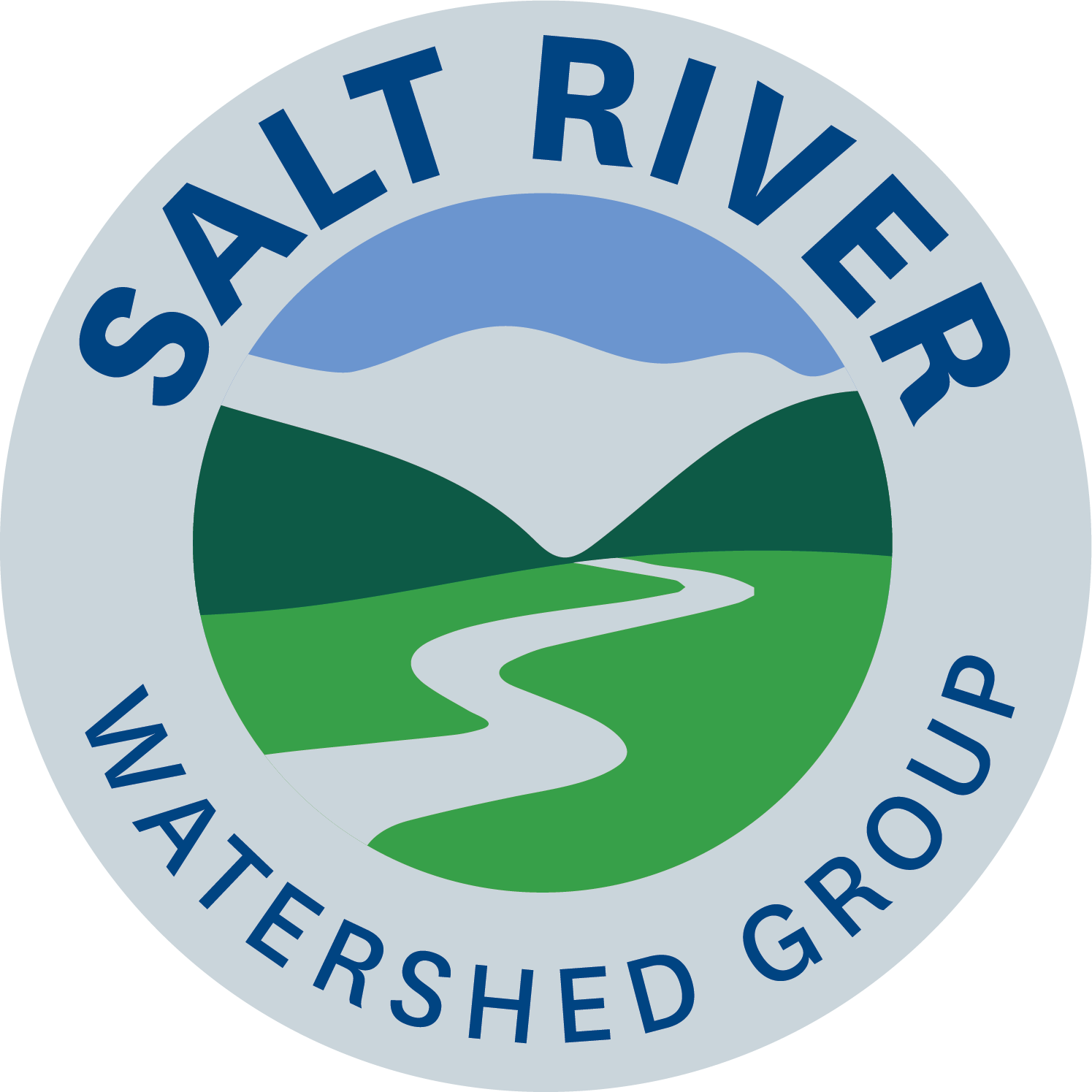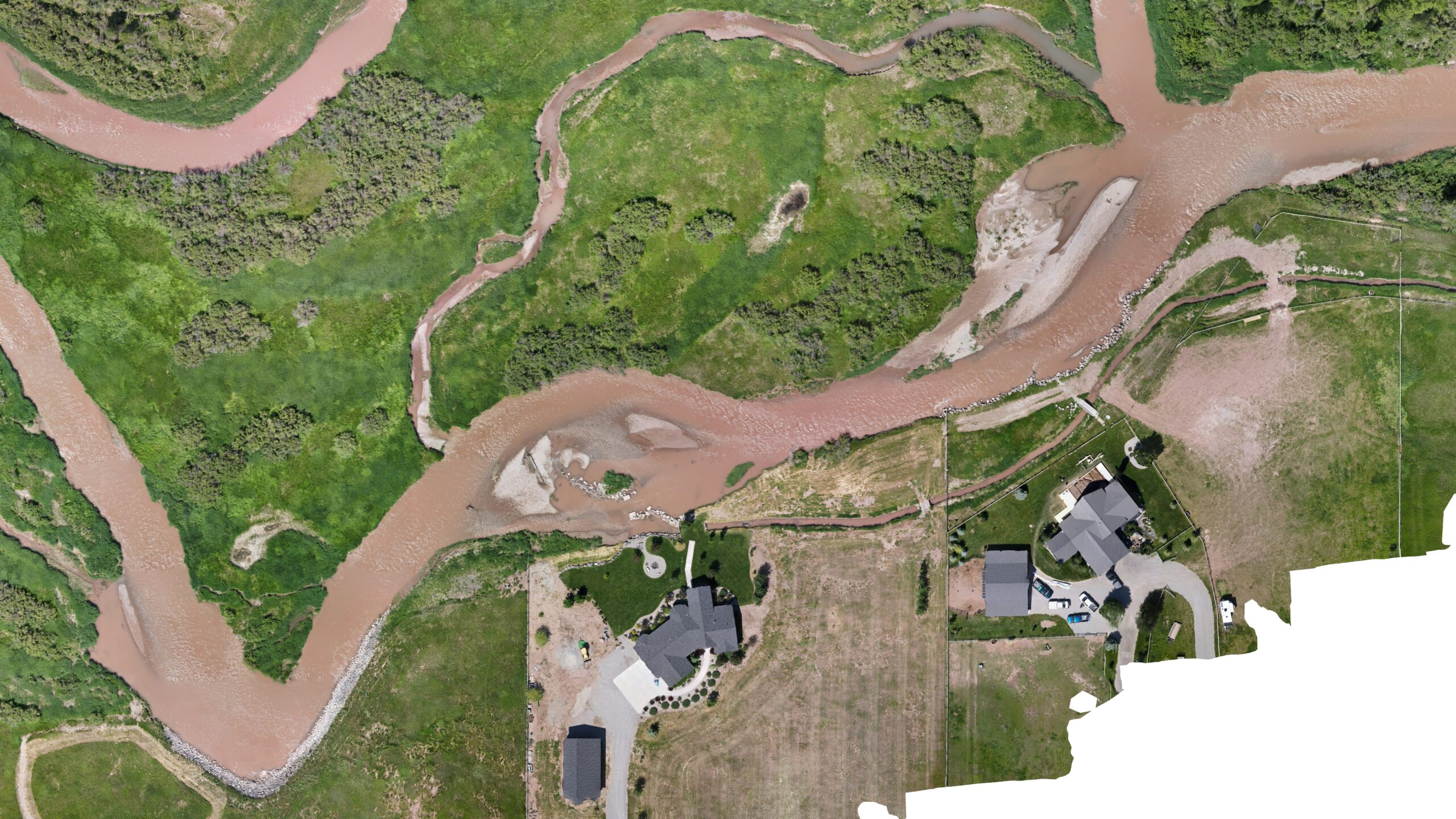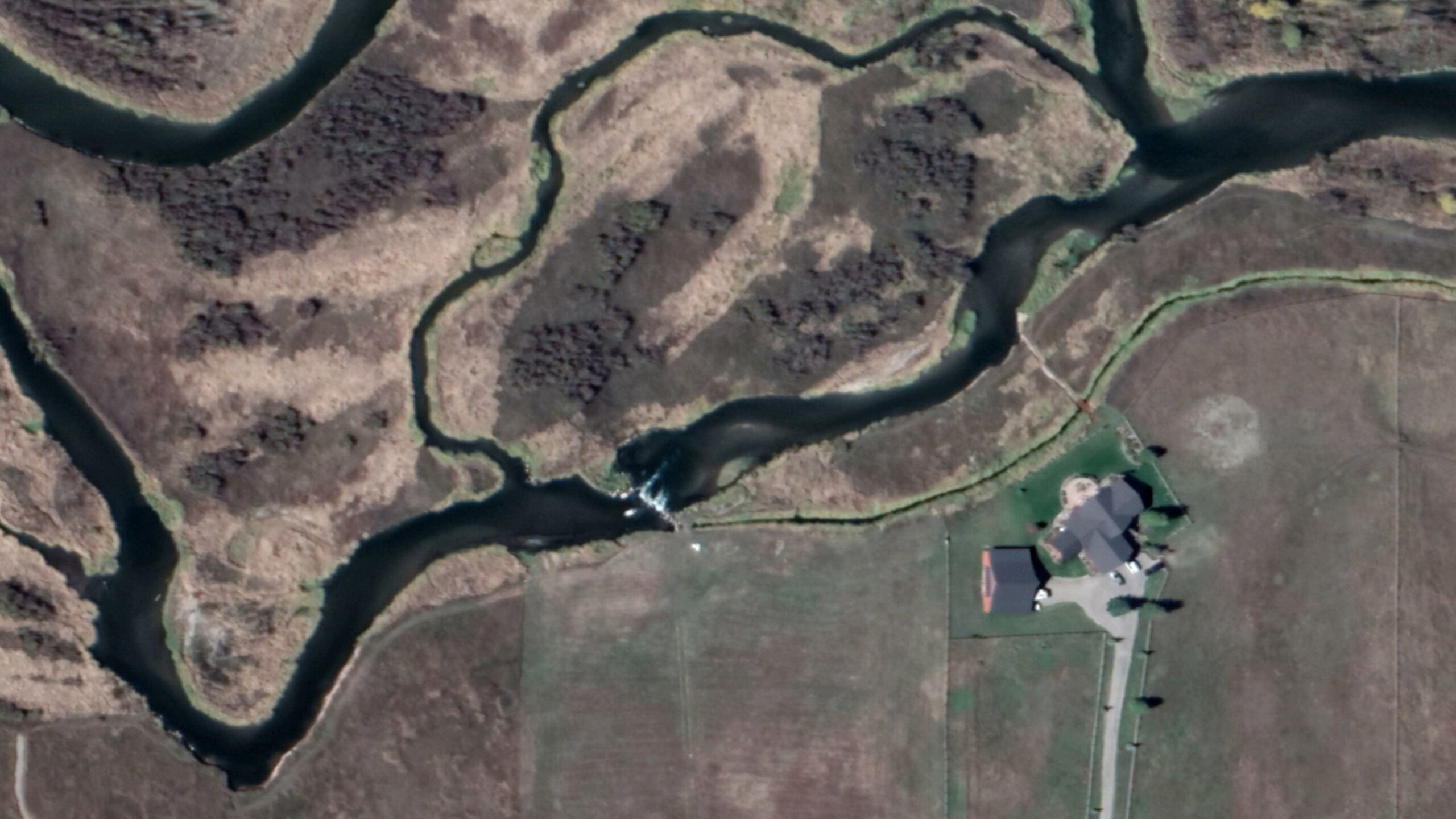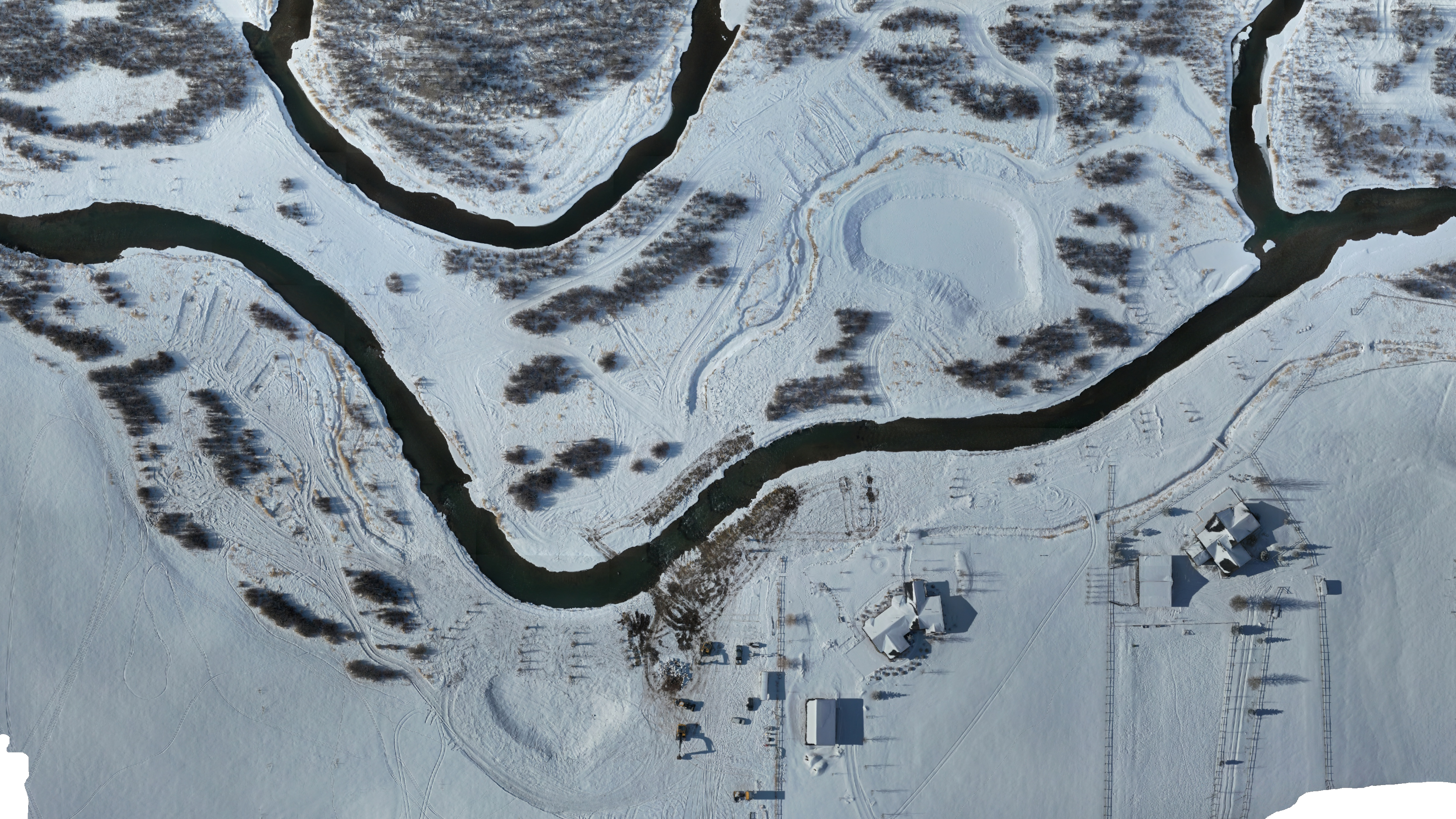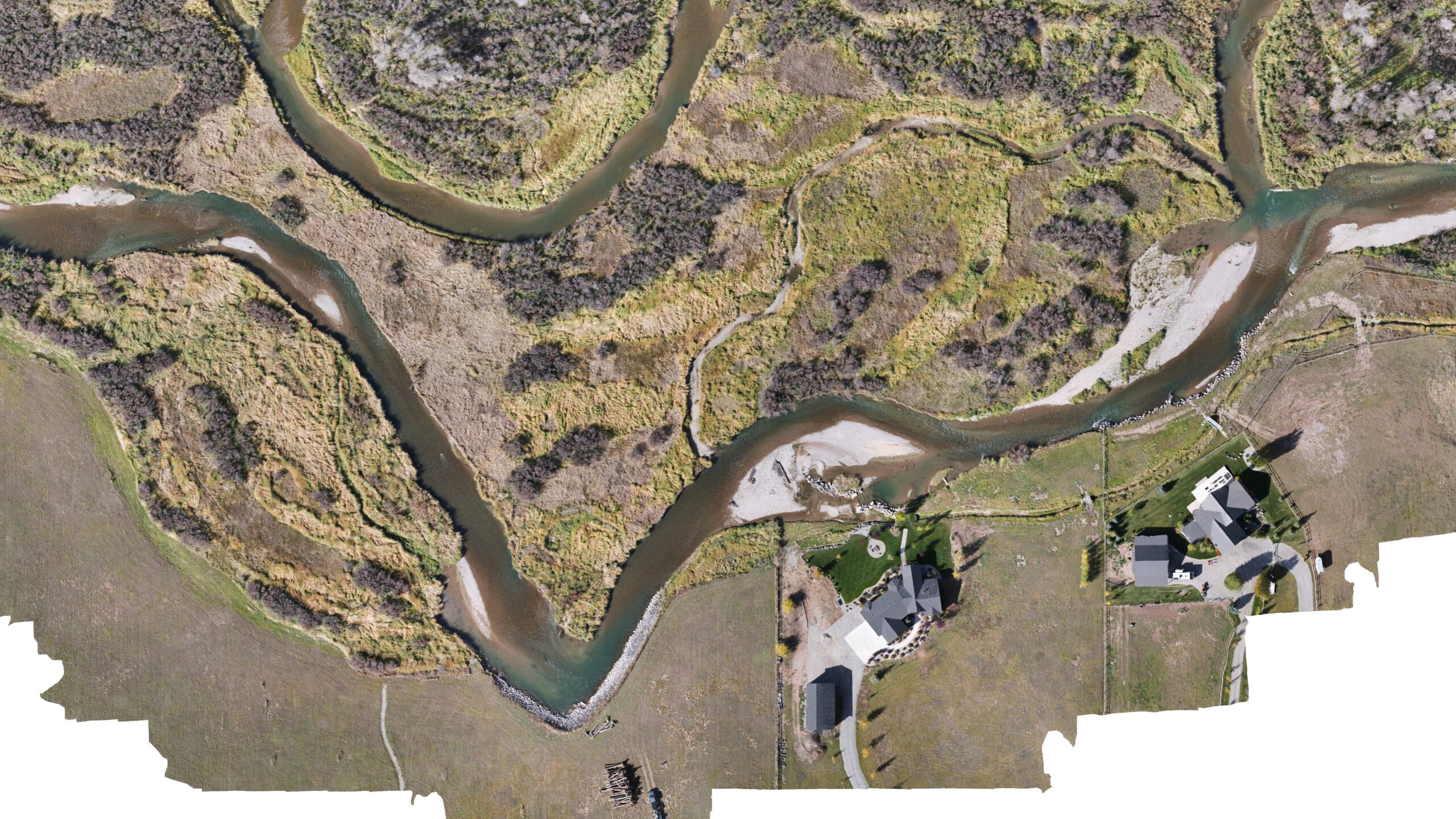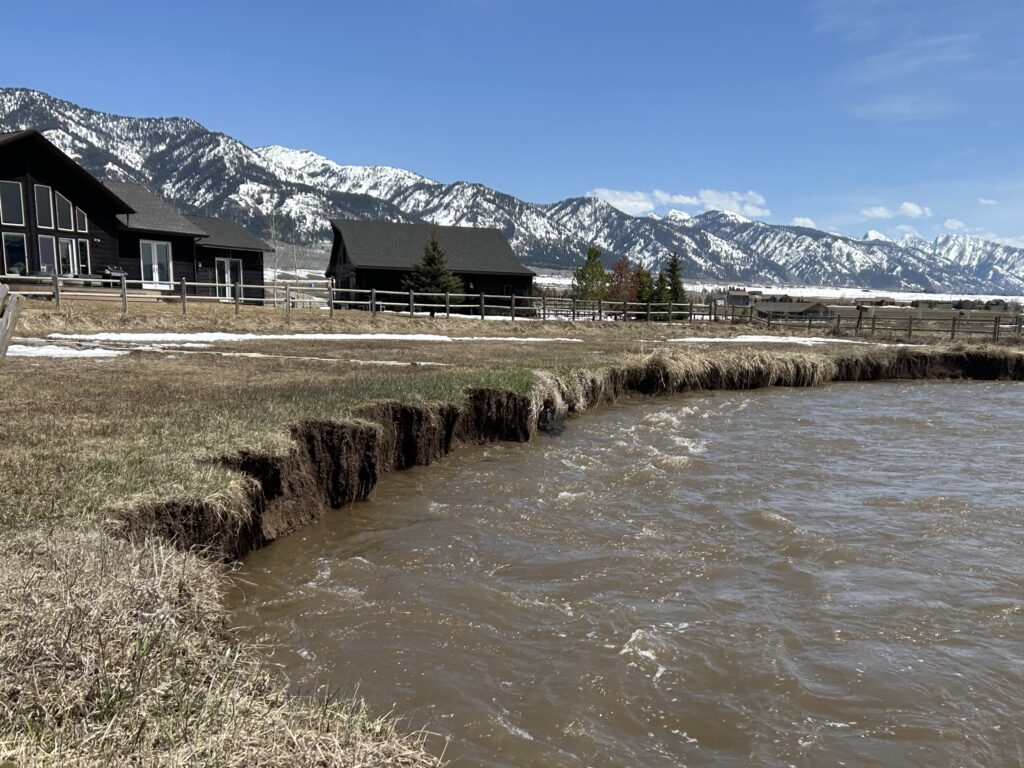
Landowners adjacent to the diversion for the New Rico Ditch contacted Trout Unlimited, WGFD, and other agencies due to extreme erosion and instability concerns. Prior to spring runoff in 2023, banks had been eroding a few feet per year. One landowner had spent 10’s of thousands installing riprap to save their land, only for that riprap to exacerbate downstream erosion. During runoff in 2023, the next two downstream banks eroded as much as 50 feet. The bank nearest the New Rico Ditch was migrating up to six feet per day, with only ten feet remaining between the river and the ditch on June 1, 2023. Landowners, irrigators, NRCS, and Star Valley Conservation District leveraged NRCS Emergency Watershed Protection funds to haul in large rock to temporarily protect the ditch and halt land loss.
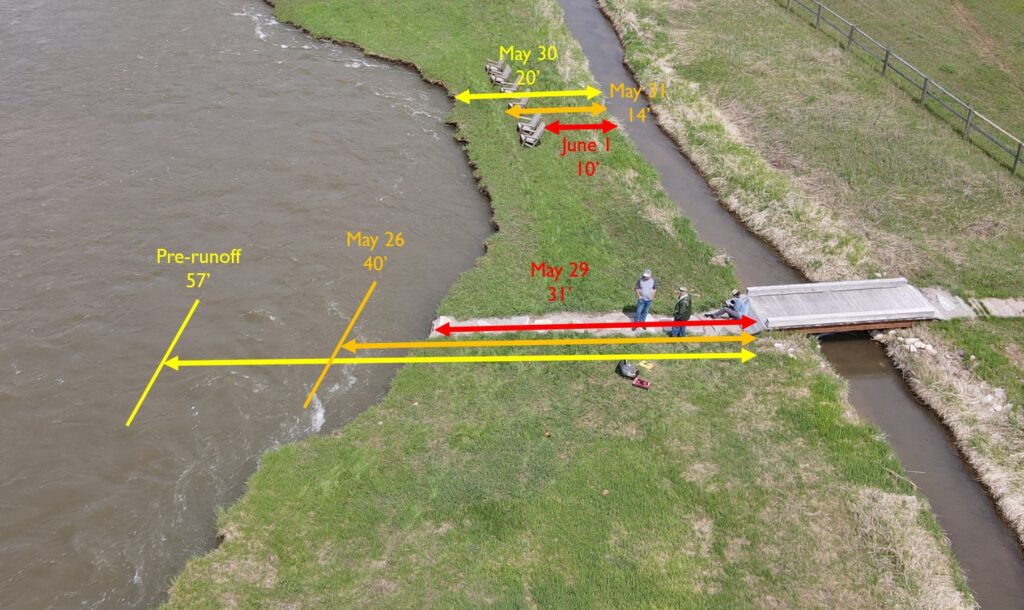
Below is a slider showing channel migration between 2016 and July of 2023. The majority of this erosion took place in 2023. The instability is due to a lack of willows and other woody riparian vegetation to hold banks together. This imagery also shows how the addition of riprap to one bank had a “slingshot” effect, increasing erosion on the next banks downstream. When a river hits willows, logs, and roots on an outside bend, the bank is able to absorb some of the water’s energy. Riprap does not absorb energy, it protects the bank and sends the energy downstream to the next bank.
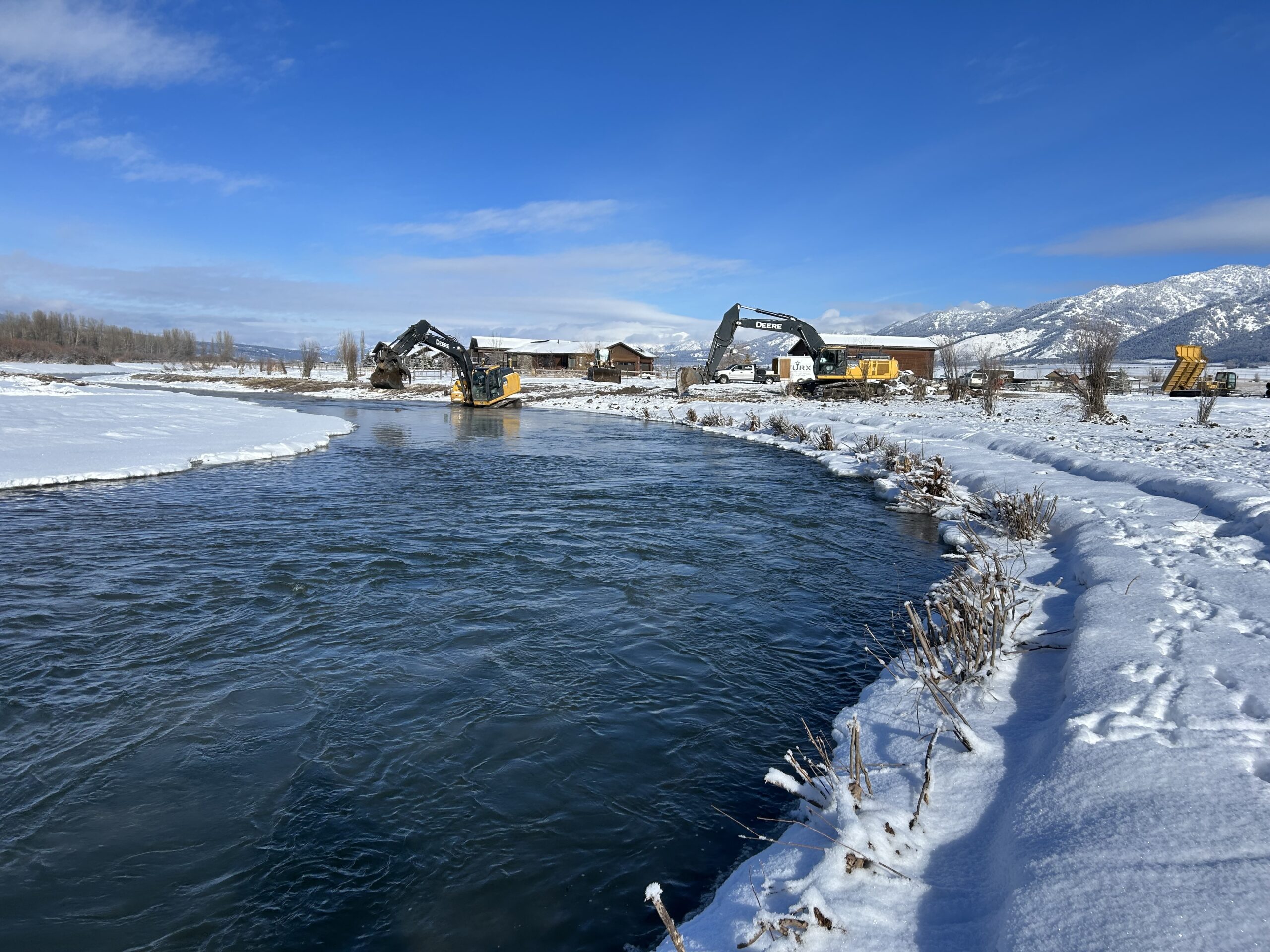
Due to the severity of erosion, the project was expedited to complete construction before the next runoff event. The design was completed by WWC Engineering. Toewood, bankfull benches, and willow transplants are among the bioengineering approaches that were used to stabilize and vegetate outside banks, while also adding habitat value. The design also incorporated natural channel dimensions and a stable diversion structure to ensure sediment was transported through the project reach. The new diversion structure was designed with large, 3 to 4-foot boulder cross-vanes with riprap behind. The point of diversion was moved upstream to ensure irrigators met their water needs without needing a high dam across the river.
Imagery before and after construction is shown above. Better imagery will be taken after snow melts and the new headgate and pipe are installed in April, 2024. The newly restored channel provides greatly improved aquatic and riparian habitat, ensure long-term fish passage through the diversion, provides safe boater passage, and allows irrigators to meet their water needs with minimal maintenance.
